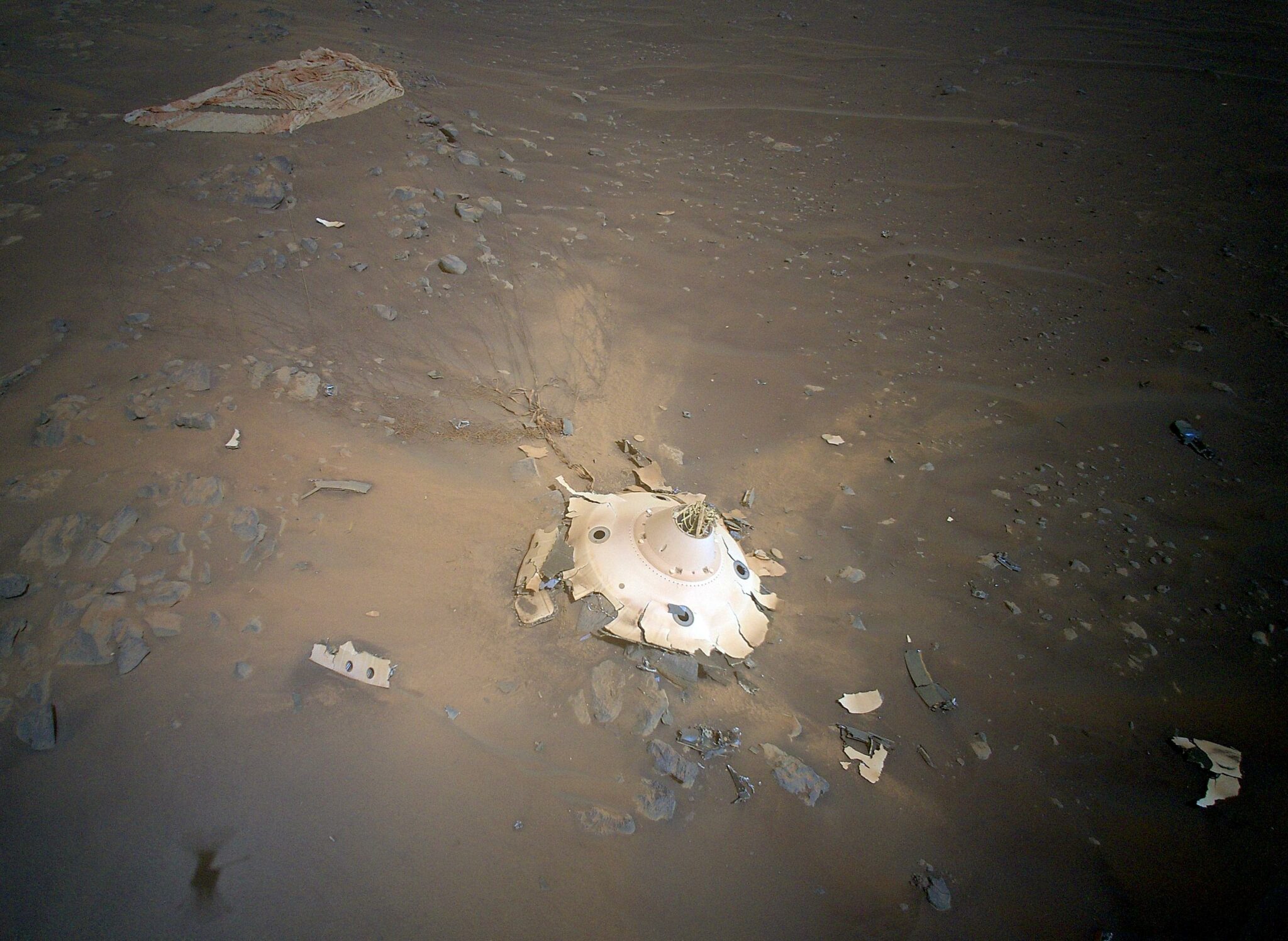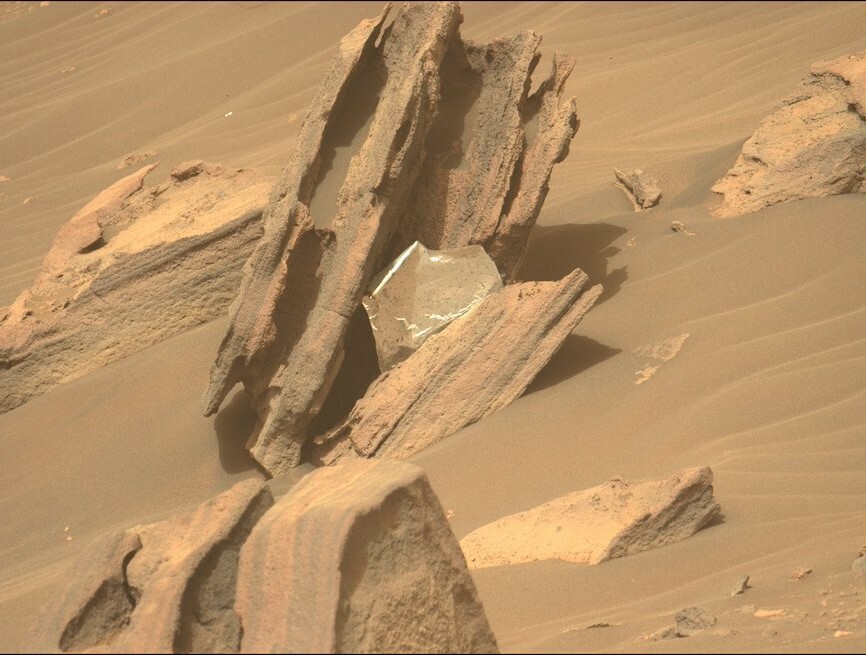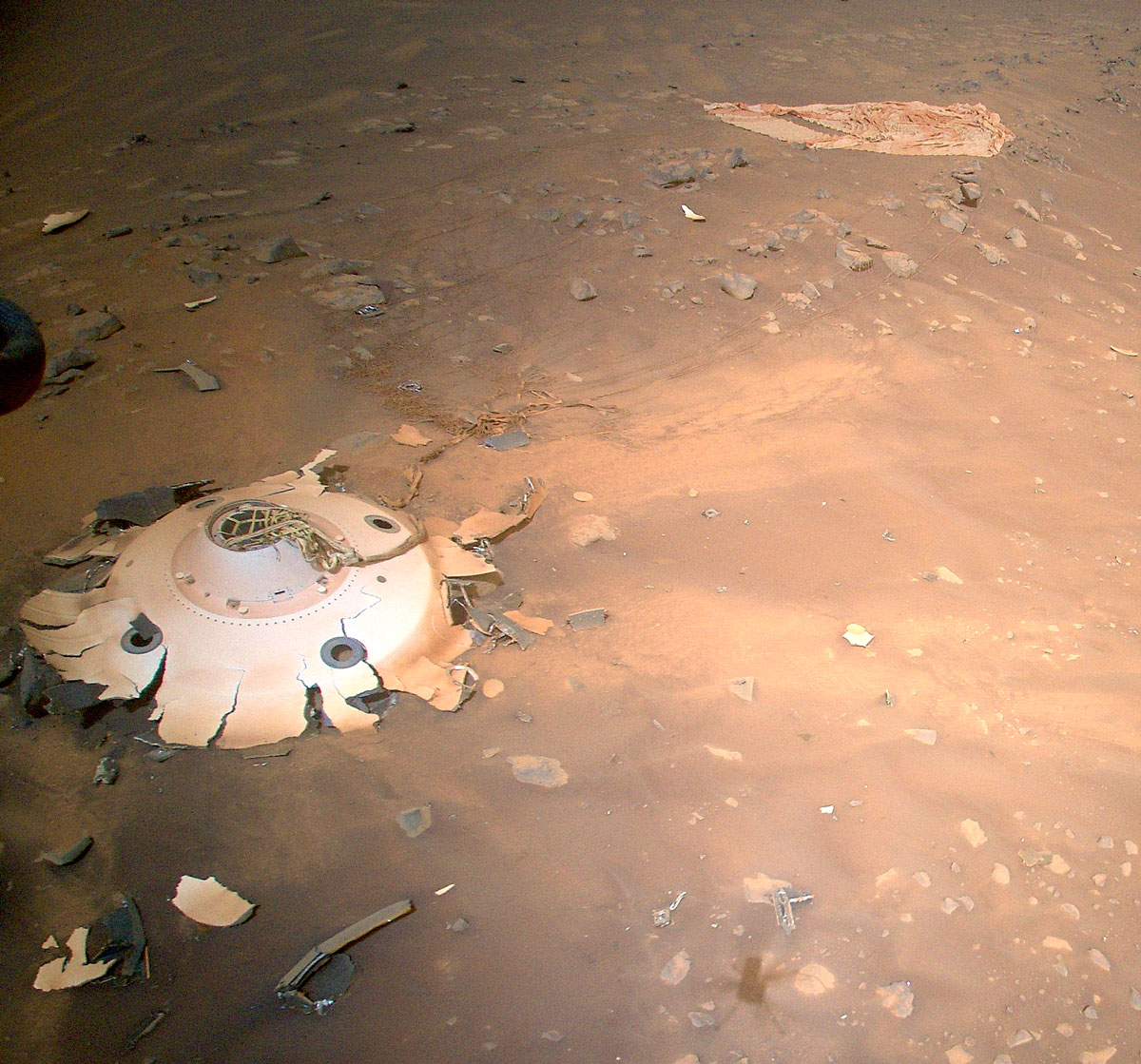Mankind has been actively exploring the surface of Mars for more than 50 years. According to the UN Office for Outer Space, countries have sent 18 artificial objects to Mars during 14 separate missions. Many of these missions are still ongoing, but over the decades of Mars exploration, mankind has left a lot of debris on the surface of the Red Planet, which is already a problem.

This is not the first time the Perseverance rover has noticed the consequences of contamination of the surface of Mars with the remnants of its own mission, starting from the destroyed body of the protective shield, ending with small pieces of debris left behind by the landing platform and parachute.
Dead robots as a source of garbage
Nine inactive spacecraft on Mars have now become space debris on the planet’s surface. These are the Mars 3 lander, Mars 6 lander, Viking 1 lander, Viking 2 lander, the Sojourner rover, Opportunity rovers, as well as the lost Beagle 2 and Phoenix landers. Although they are mostly intact, they are better considered historical relics than garbage.
Crashed spacecraft and their debris are another significant source of debris. Safe descent to the surface of the planet is the most difficult part of any Mars landing mission, and this stage does not always end successfully. At least two spacecraft crashed, and four more lost contact before or immediately after landing.

At the same time, the Perseverance and Curiosity spacecraft are also littering after themselves. Curiosity’s aluminum wheels are gradually collapsing and leaving debris particles. If an older device accidentally litters, Perseverance does it purposefully: in July 2021, NASA ordered the rover to throw the used drill bit to the surface to be replaced with a new one in order to continue drilling rocks to collect samples.

If we add the mass of all spacecraft that have ever been sent to Mars, then their total weight will be approximately 9979 kg. Subtract the weight of the vehicles currently operating on the surface (2860 kg), and you will have 7119 kg of garbage on Mars, which humanity brought there.
Space ecology
Today, scientists’ main concern about debris on Mars is the risk it poses to current and future missions. Perseverance teams document all the debris found and check whether it can contaminate the samples that the rover is actively collecting. NASA engineers also considered whether Perseverance could have become entangled in the debris during landing, but concluded that the risk was low.
In the future, when humanity flies to Mars to organize the first colony, waste and garbage on the planet will become an even bigger problem. Therefore, the solution of this issue needs to be actively thought out now for the sake of the future of humanity and clean space.
Earlier we reported that the risk of death from falling space debris has been calculated.
According to Science Alert
Follow us on Twitter to get the most interesting space news in time
https://twitter.com/ust_magazine

